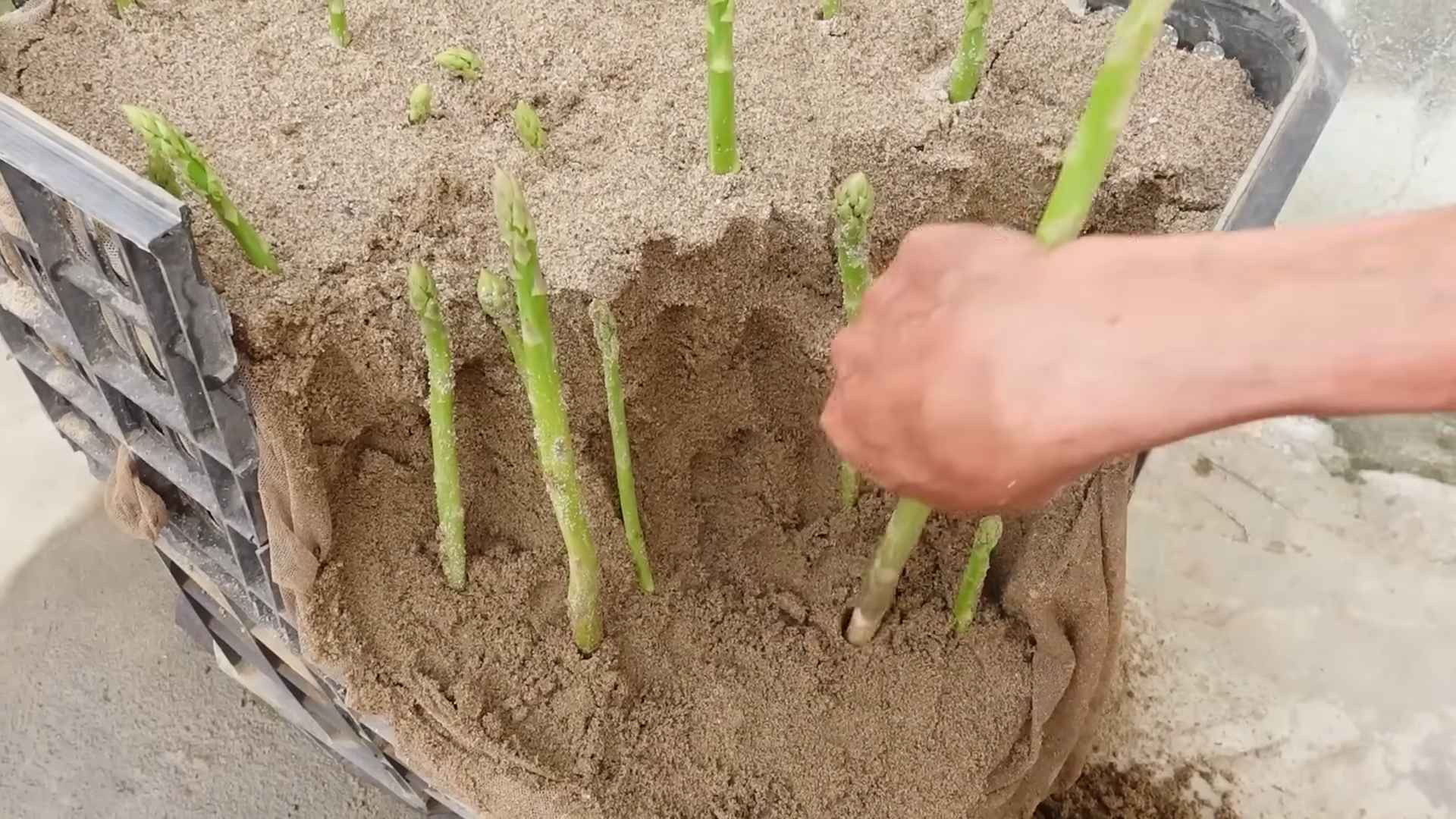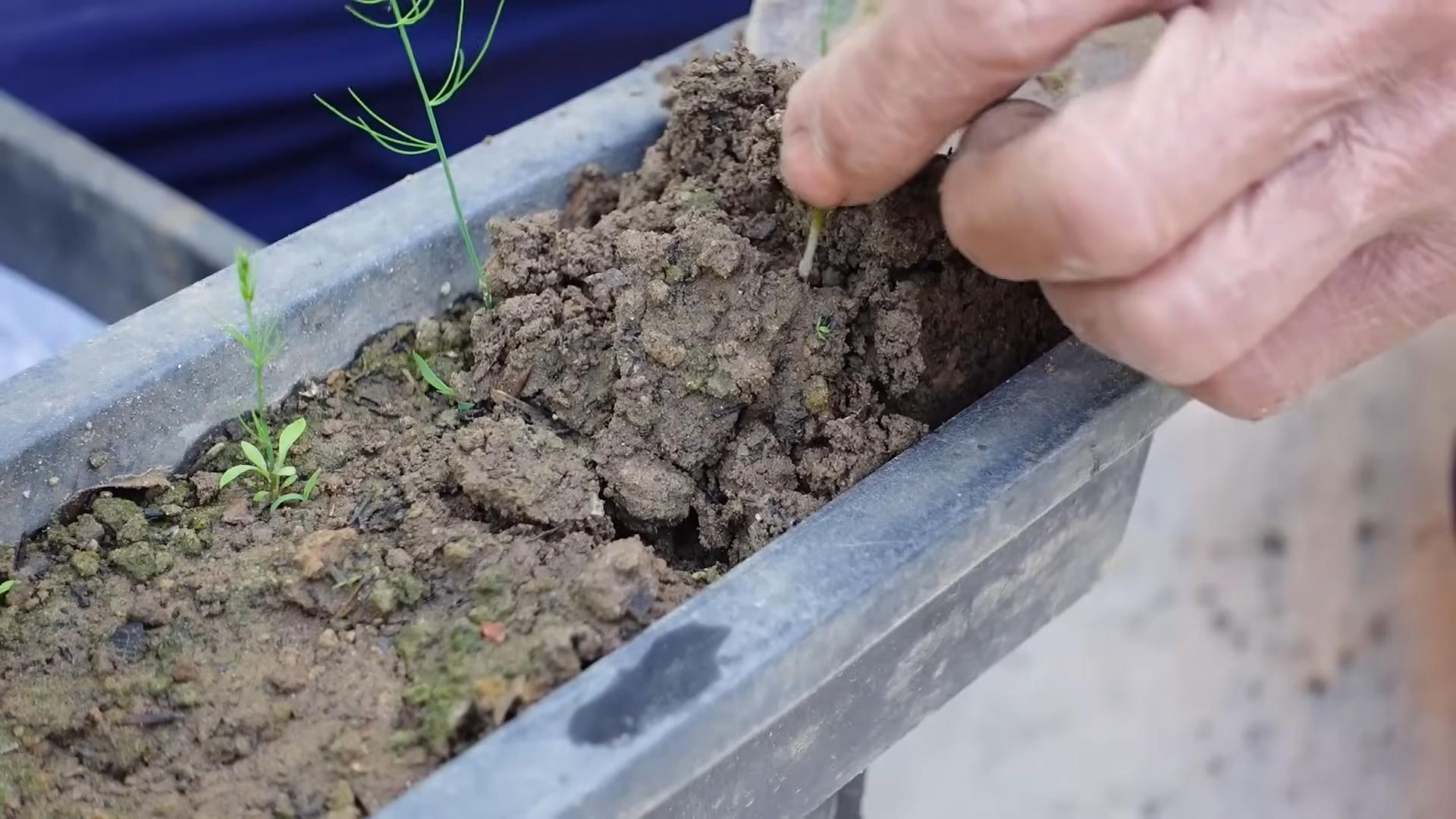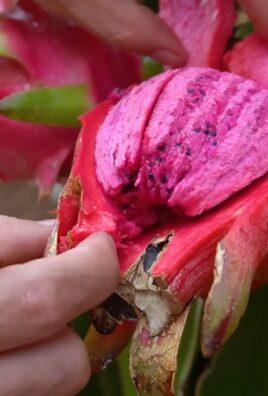Grow Asparagus in Backyard: Imagine stepping into your garden and harvesting fresh, tender asparagus spears, ready to be steamed, grilled, or tossed into a delicious spring salad. Sounds dreamy, right? Well, it doesn’t have to be just a dream! For centuries, asparagus has been prized for its delicate flavor and nutritional benefits, dating back to ancient Greece and Rome where it was considered a delicacy. Today, you don’t need to be a seasoned farmer to enjoy this springtime treat.
Many people shy away from growing asparagus, thinking it’s too difficult or time-consuming. But I’m here to tell you that with a few simple tricks and a little patience, you can successfully grow asparagus in your backyard, even if you’re a beginner gardener. This DIY guide will walk you through everything you need to know, from selecting the right variety to preparing your soil and harvesting your first crop.
Why bother with the effort? Because nothing beats the taste of homegrown asparagus, picked fresh from your own garden. Plus, you’ll save money, reduce your carbon footprint, and enjoy the satisfaction of nurturing your own food. So, grab your gardening gloves, and let’s get started on this rewarding journey to growing your own delicious asparagus!

Growing Asparagus: A Beginner’s Guide to a Bountiful Backyard Harvest
Asparagus, that delicious and elegant spring vegetable, might seem intimidating to grow. But trust me, with a little patience and the right approach, you can absolutely cultivate your own asparagus patch right in your backyard! It’s a long-term investment, as asparagus takes a few years to mature, but the rewards – fresh, flavorful spears year after year – are well worth the wait. I’m going to walk you through everything you need to know to get started.
Choosing the Right Asparagus Variety
Before you even think about digging, you need to decide which asparagus variety is best suited for your climate and preferences. Here are a few popular options:
* ‘Jersey Knight’: This is a widely recommended male hybrid variety known for its high yields, disease resistance, and excellent spear quality. It’s a great choice for beginners.
* ‘Jersey Giant’: Similar to ‘Jersey Knight,’ but produces even larger spears. Also a male hybrid, so you won’t have to worry about unwanted seedlings.
* ‘Purple Passion’: A unique variety with beautiful purple spears that turn green when cooked. It’s sweeter and more tender than green varieties.
* ‘Mary Washington’: An older, heirloom variety that’s still popular for its reliability and good flavor.
Consider your local climate and soil conditions when making your choice. Your local nursery can offer valuable advice on which varieties thrive in your area.
Preparing Your Asparagus Bed
Asparagus needs a permanent home, so site selection and bed preparation are crucial. This is where you’ll put in the most effort upfront, but it will pay off in the long run.
* Sunlight: Asparagus needs at least 6-8 hours of direct sunlight per day. Choose a location that gets plenty of sun throughout the growing season.
* Soil: Asparagus prefers well-drained, sandy loam soil with a pH between 6.5 and 7.0. Heavy clay soil can lead to root rot, so amending the soil is essential if you have clay.
* Drainage: Good drainage is critical. Avoid areas where water tends to pool after rain.
* Space: Asparagus plants can get quite large, so allow ample space. A single plant can spread to about 3 feet wide.
Step-by-Step Planting Guide
Now for the fun part – planting your asparagus! You can start asparagus from seed, but it’s much faster and easier to plant crowns (one-year-old dormant roots). I highly recommend using crowns, especially for beginners.
1. Timing: The best time to plant asparagus crowns is in early spring, as soon as the soil can be worked.
2. Soil Preparation: Before planting, thoroughly till the soil to a depth of at least 12 inches. Remove any rocks, weeds, and debris. Amend the soil with plenty of compost or well-rotted manure to improve drainage and fertility. I usually add a generous amount – about a wheelbarrow full per 10 square feet.
3. Digging the Trench: Dig trenches that are about 12 inches wide and 6-8 inches deep. Space the trenches about 4 feet apart. This spacing allows for good air circulation and prevents overcrowding as the plants mature.
4. Creating a Ridge: In the bottom of each trench, create a small ridge of soil down the center. This ridge will support the asparagus crowns and help with drainage.
5. Placing the Crowns: Place the asparagus crowns on top of the ridge, spacing them about 12-18 inches apart. The crowns should be positioned with the roots spread out evenly on either side of the ridge.
6. Covering the Crowns: Gently cover the crowns with about 2-3 inches of soil. Water thoroughly after planting.
7. Gradual Filling: As the asparagus spears emerge and grow, gradually fill in the trench with soil. This process, called “hilling,” encourages the development of a strong root system. Continue filling the trench until it’s level with the surrounding ground.
First-Year Care: Patience is Key
The first year is all about establishing a strong root system. Resist the urge to harvest any spears during this time.
* Watering: Keep the soil consistently moist, but not waterlogged. Water deeply whenever the top inch of soil feels dry.
* Weeding: Keep the asparagus bed free of weeds. Weeds compete with the asparagus plants for nutrients and water. Hand-pull weeds carefully to avoid disturbing the roots.
* Fertilizing: Fertilize the asparagus plants in early spring with a balanced fertilizer, such as 10-10-10. Follow the instructions on the fertilizer package. I also like to side-dress with compost throughout the growing season.
* Mulching: Apply a layer of mulch around the asparagus plants to help retain moisture, suppress weeds, and regulate soil temperature. Organic mulches, such as straw or wood chips, are excellent choices.
Second-Year Care: Still Waiting
Continue to care for your asparagus plants as you did in the first year. You can harvest a few spears in the second year, but only for a short period (about 2 weeks). This will allow the plants to continue to develop their root systems.
* Watering: Maintain consistent watering, especially during dry periods.
* Weeding: Stay vigilant about weeding.
* Fertilizing: Fertilize again in early spring.
* Mulching: Replenish the mulch as needed.
Harvesting Your Asparagus: The Sweet Reward
In the third year, you can finally start harvesting your asparagus spears in earnest!
* Harvesting Time: Harvest asparagus spears when they are about 6-8 inches tall and the tips are still tightly closed.
* Harvesting Technique: Use a sharp knife to cut the spears at ground level. Be careful not to damage the surrounding spears or the crown.
* Harvesting Period: The harvesting period typically lasts for 6-8 weeks in the spring. As the weather warms up, the spears will become thinner and less tender.
* Stopping the Harvest: Stop harvesting when the spears become thin and spindly. This allows the plants to replenish their energy reserves for the following year.
Ongoing Care: Maintaining Your Asparagus Patch
Asparagus is a perennial plant, meaning it will come back year after year. To keep your asparagus patch healthy and productive, follow these ongoing care tips:
* Fertilizing: Fertilize the asparagus plants in early spring with a balanced fertilizer.
* Weeding: Continue to keep the asparagus bed free of weeds.
* Mulching: Replenish the mulch as needed.
* Watering: Water deeply during dry periods.
* Fern Management: After the harvesting season, the asparagus plants will produce ferns. Allow the ferns to grow and mature. They will help to nourish the root system. In late fall or early winter, after the ferns have turned brown, cut them back to ground level.
* Pest and Disease Control: Asparagus is generally pest-resistant, but watch out for common pests like asparagus beetles. Hand-pick beetles or use an insecticidal soap if necessary. Good air circulation and proper drainage can help prevent fungal diseases.
Troubleshooting Common Asparagus Problems
Even with the best care, you might encounter some problems with your asparagus patch. Here are a few common issues and how to address them:
* Thin Spears: Thin spears can be caused by over-harvesting, nutrient deficiencies, or stress. Make sure you’re not harvesting for too long and that you’re fertilizing regularly.
* Yellowing Ferns: Yellowing ferns can be a sign of nutrient deficiencies, disease, or poor drainage. Check the soil pH and drainage, and fertilize as needed.
* Asparagus Beetles: Asparagus beetles can damage the spears and ferns. Hand-pick beetles or use an insecticidal soap.
* Crown Rot: Crown rot is a fungal disease that can cause the crowns to rot. Ensure good drainage and avoid overwatering.
Enjoying Your Homegrown Asparagus
The best part of growing your own asparagus is, of course, enjoying the delicious harvest! Freshly picked asparagus is incredibly flavorful and tender. Here are a few ideas for using your homegrown asparagus:
* Steamed or Roasted: Simply steam or roast asparagus with a little olive oil, salt, and pepper.
* Grilled: Grill asparagus for a smoky flavor.
* In Salads: Add asparagus to salads for a fresh, crunchy element.
* In Soups and Stews: Asparagus adds a delicate flavor to soups and stews.
* With Eggs: Asparagus and eggs are a classic combination. Try asparagus omelets, frittatas, or quiches.
Growing asparagus takes time and effort, but the rewards are well worth

Conclusion
So, there you have it! Growing asparagus in your backyard isn’t just a gardening project; it’s an investment in years of delicious, fresh harvests. Forget those limp, overpriced spears at the grocery store. Imagine stepping outside and snipping vibrant, tender asparagus right from your own garden. The flavor difference is truly remarkable, and the satisfaction of nurturing your own food is unparalleled.
This DIY trick, focusing on proper bed preparation and patient cultivation, is a must-try for any home gardener, regardless of experience level. While it requires a bit of initial effort and a commitment to the long game, the rewards are well worth it. Think of it as planting a culinary legacy!
But don’t stop there! Experiment with different asparagus varieties to find your favorites. ‘Jersey Knight’ is a reliable and productive choice, while ‘Purple Passion’ offers a unique color and slightly sweeter flavor. Consider companion planting to maximize your garden’s potential. Herbs like basil and parsley can deter asparagus beetles, while tomatoes and marigolds can help improve soil health.
And remember, patience is key. It takes a few years for asparagus crowns to mature and produce a substantial harvest. Resist the urge to over-harvest in the early years, allowing the plants to establish strong root systems. This will ensure years of bountiful harvests to come.
We encourage you to embrace this DIY project and experience the joy of growing your own asparagus. It’s a rewarding and sustainable way to enjoy this springtime delicacy. Don’t be intimidated by the perceived difficulty; with the right preparation and a little patience, you’ll be enjoying homegrown asparagus in no time.
Once you’ve embarked on your asparagus-growing adventure, we’d love to hear about your experiences! Share your tips, successes, and even your challenges in the comments below. Let’s build a community of asparagus enthusiasts and learn from each other. What varieties did you choose? What challenges did you face, and how did you overcome them? What are your favorite ways to prepare your homegrown asparagus? Your insights could be invaluable to other aspiring gardeners. So, get your hands dirty, plant those crowns, and get ready to savor the taste of homegrown goodness! This DIY asparagus growing method will change the way you think about fresh produce.
Frequently Asked Questions (FAQ)
What is the best time of year to plant asparagus crowns?
The ideal time to plant asparagus crowns is in early spring, as soon as the ground can be worked. This allows the crowns to establish themselves before the heat of summer arrives. In colder climates, you can also plant in late fall, but be sure to mulch heavily to protect the crowns from freezing temperatures. Avoid planting during the hottest months of summer, as the stress can hinder their establishment.
How much space do asparagus plants need?
Asparagus plants need ample space to spread their roots and foliage. A good rule of thumb is to space crowns about 12-18 inches apart in rows that are 4-5 feet apart. This allows for adequate air circulation and sunlight penetration, which are essential for healthy growth. If you’re planting in a raised bed, you can slightly reduce the spacing, but be sure to provide enough room for the plants to mature.
What type of soil is best for growing asparagus?
Asparagus thrives in well-drained, fertile soil with a slightly acidic to neutral pH (6.0-7.0). Before planting, amend the soil with plenty of organic matter, such as compost or well-rotted manure, to improve drainage and fertility. Avoid heavy clay soils, as they can become waterlogged and lead to root rot. If you have clay soil, consider planting in raised beds or amending the soil with sand and organic matter to improve drainage.
How long does it take for asparagus plants to produce a harvest?
Patience is key when growing asparagus! It typically takes 2-3 years after planting crowns to begin harvesting spears. In the first year, allow the plants to establish themselves without harvesting any spears. In the second year, you can harvest a few spears for a short period (about 2 weeks). In the third year and beyond, you can harvest for a longer period (6-8 weeks) in the spring.
How do I harvest asparagus spears?
Harvest asparagus spears when they are about 6-8 inches tall and have tightly closed tips. Use a sharp knife to cut the spears at ground level. Avoid pulling the spears, as this can damage the crown. Harvest spears every day or two during the peak harvest season. As the harvest season progresses, the spears will become thinner and less tender. At this point, stop harvesting and allow the plants to fern out.
What are some common asparagus pests and diseases?
Asparagus beetles are a common pest that can damage asparagus foliage. Handpicking the beetles or using insecticidal soap can help control them. Asparagus rust is a fungal disease that can cause orange pustules on the foliage. Good air circulation and proper watering can help prevent rust. Crown rot is another disease that can affect asparagus plants, especially in poorly drained soils. Ensure good drainage and avoid overwatering to prevent crown rot.
How do I care for asparagus plants after the harvest season?
After the harvest season, allow the asparagus plants to fern out and grow tall. This allows them to replenish their energy reserves for the following year’s harvest. Fertilize the plants with a balanced fertilizer in late spring or early summer. Water regularly, especially during dry periods. Cut back the ferns to ground level in late fall or early winter after they have turned brown.
Can I grow asparagus in containers?
Yes, you can grow asparagus in containers, but you’ll need a large container (at least 18 inches in diameter and depth) to accommodate the plant’s root system. Use a well-draining potting mix and water regularly. Container-grown asparagus may not be as productive as plants grown in the ground, but it’s a good option if you have limited space.
What are some good companion plants for asparagus?
Several plants can benefit asparagus when planted nearby. Tomatoes, basil, parsley, and marigolds are all good companion plants for asparagus. Tomatoes can help deter asparagus beetles, while basil and parsley can attract beneficial insects that prey on asparagus pests. Marigolds can help improve soil health. Avoid planting asparagus near onions, garlic, or other alliums, as they can inhibit asparagus growth.
How often should I fertilize my asparagus plants?
Fertilize asparagus plants in late spring or early summer after the harvest season. Use a balanced fertilizer (e.g., 10-10-10) or a fertilizer specifically formulated for vegetables. Follow the instructions on the fertilizer package for application rates. You can also amend the soil with compost or well-rotted manure to provide additional nutrients. Avoid over-fertilizing, as this can lead to excessive foliage growth and reduced spear production.





Leave a Comment